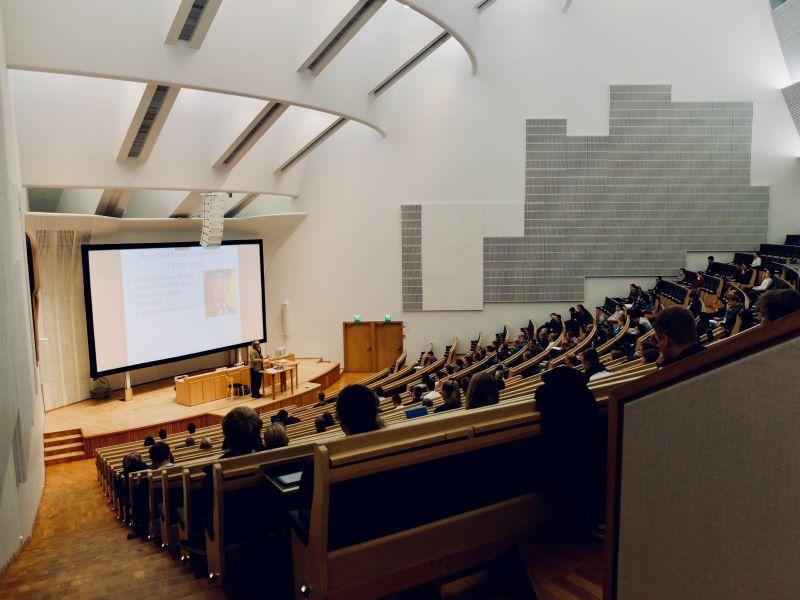
How leaders can seize higher ed’s ‘catalytic moment for change’

I recently led a research team that interviewed presidents, vice-chancellors and directors of national universities from around the world, in an attempt to enhance understanding of presidents’ roles in leading through Covid-19.
One common theme raised by these leaders was the need for all institutions to be ready to evolve. One president with more than three decades of experience leading a university went as far as to say: “I really look at [Covid] as a catalytic moment for change…I think we have no choice but to change.”
This president went on to posit that institutions trying to hang on and “pray for normality” would be unlikely to survive. They further insisted that, at the other end of the spectrum, some institutions would be “drivers that are going to be the ones to figure out very early that this opportunity allowed them to get out into the blue water and do things much differently, to create a whole new structure…for our education [system]”.
The area where the swiftest and most significant change occurred was the move to online or distance courses for traditionally face-to-face campuses. This monumental shift, thought of as almost impossible prior to the pandemic, certainly highlights a “catalytic moment for change” in how faculty engage their classes. But on numerous campuses this growth and opportunity has stagnated, with many faculty seeking a return to “normal” over development of new teaching skills and greater pedagogical flexibility.
Below are three things institutional leaders can do to live up to their titles and truly lead in the development of faculty as they seek to be better equipped to grasp the transformation of educational systems worldwide.
Demonstrate the change
Leaders often underestimate the subtle and unintentional messages they send through their decisions and actions. When it comes to a transformational approach to utilising technology in the classroom, they should consider their example. If leaders want faculty and staff to engage in developmental opportunities and become better online educators, they need to demonstrate new technologies in practice and in exemplary ways.
Even simple steps such as utilising the breadth of tools in online meeting platforms, such as breakout groups, chat boxes, polls and content sharing, can inspire faculty to see what is possible. Further, taking ordinary practices such as required training or orientation and developing highly engaging online learning tools through campus platforms can similarly take a common practice and transform it into an opportunity to promote development.
Highlight what great faculty look like and how they got there
However, utilising the tools required for high impact online leaning is not enough. Leaders should be prepared to point out when high-impact practices are used and where faculty can go for training. This helps ensure faculty recognise and take advantage of opportunities. Awards and recognition are common tools in higher education for rewarding faculty performance, but sadly they are often ambiguous and disconnected from the majority of faculty.
To achieve the transformation referenced above, rethinking recognition could lead to greater change in an institution. For example, rather than one annual award for great teaching, a group of leaders could recognise the faculty employing innovative online tools consistently throughout the year. This more frequent approach will continually remind faculty of the resources they have that can help them be effective educators, and it also ensures that leaders are looking out for (and are thus aware of) innovative practices. In addition, once faculty are spotlighted, the training and resources they employed to develop their pedagogical approach should be the focus of that recognition. This will help raise awareness of the opportunities available to faculty to become better educators.
Centralise leadership but decentralise impact
One of the biggest challenges of leading faculty development is striking the balance between creating opportunities for faculty to learn new skills and getting buy-in from them to engage with those opportunities.
The creation of teaching and learning development centres has helped with the advancement and centralisation of innovative teaching practices, but leaders now need to increase awareness and engagement from those in charge across their respective campuses. Strong partnerships with various academic units are a good place to start − a college of engineering may need support with testing software on campus learning management systems, and a teaching centre could provide that training while also offering it to the broader campus community. Similarly, a college of performing arts may need enhanced training on creating high-quality videos, or embedding those videos into learning management systems, which can also be developed by the institution’s teaching centre.
Adopting a centralised approach to teaching development − as a bridge between colleges and a resource for the creation of content − is critical to ensuring campus buy-in and effective use of resources.
Looking ahead
Covid-19 has highlighted the immense – and unexpected – capacity for change in universities. What was once thought impossible (a complete shift to online learning) was implemented with speed in many institutions around the world. While many teaching practices used pre-pandemic are effective and will be reinstated, the opportunity to rethink and develop innovative approaches to teaching and learning should be seized.
The “catalytic moment for change” is here, and institutional leaders that demonstrate the change, reward faculty who engage in opportunities for development and increase campus-wide buy-in will determine the future of higher education.
Jon McNaughtan is assistant professor of educational psychology and leadership at Texas Tech University.


